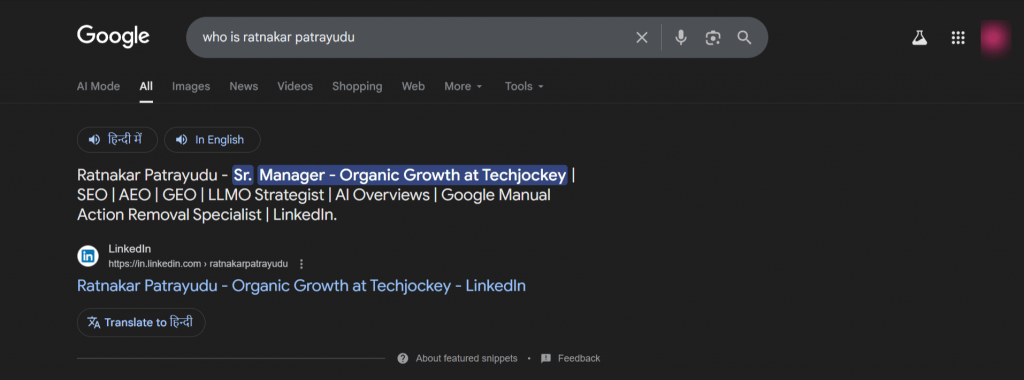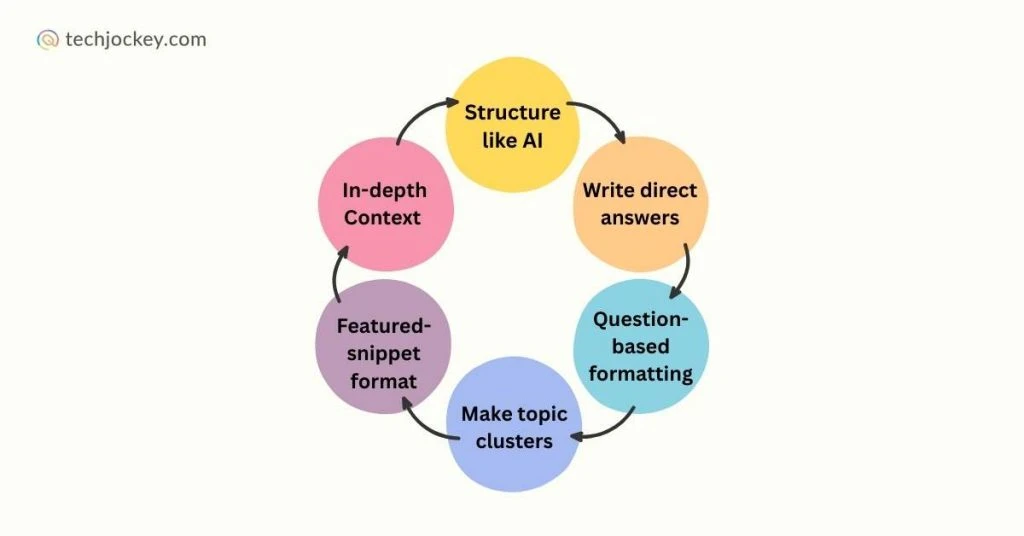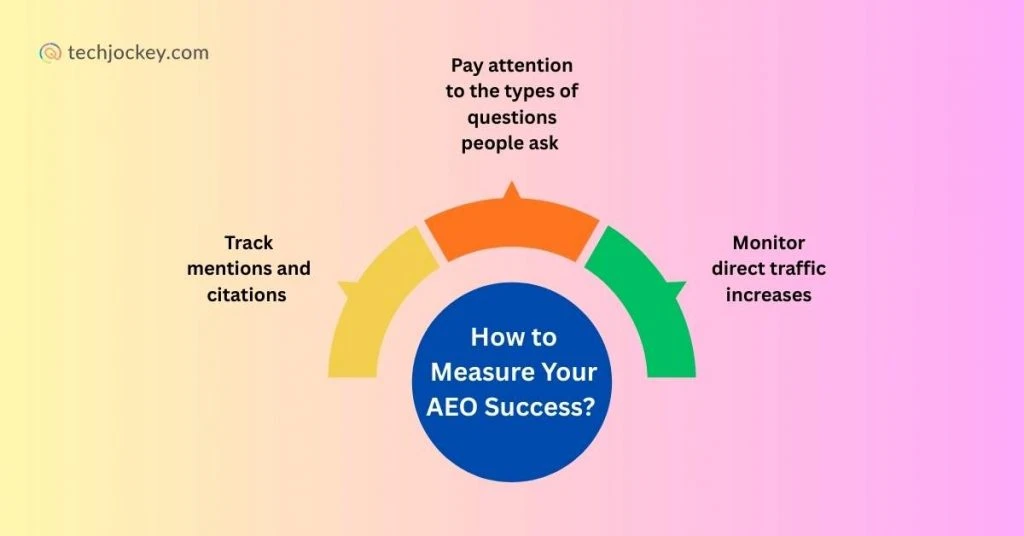How Answer Engine Optimization (AEO) Helps AI Discover Your Content?

You’ve spent hours crafting the perfect blog post. Your research is thorough, your insights are valuable, and your writing is engaging. You hit publish, expecting to see traffic pour in, but something’s wrong your content isn’t optimized for AEO (Answer Engine Optimization), which could be why it’s not reaching the right audience.
Your analytics show disappointing numbers, and worse. Yet, when you search for topics you’ve covered, AI tools like ChatGPT, Google’s AI Overview, and Perplexity seem completely unaware that your content exists.
Sound familiar? Thousands of content creators are facing this exact problem right now.
The Great Content Invisibility Crisis
Here’s what’s happening behind the scenes.
Traditional search engines used to be our primary gateway to content discovery. You’d optimize keywords, build some backlinks, and wait for Google to rank your pages. That playbook worked for years.
But the algorithms have changed dramatically. Today, people are increasingly turning to AI-powered search tools for answers. Instead of clicking through multiple websites, they expect comprehensive answers delivered instantly.
ChatGPT answers questions directly. Google’s AI Overview synthesizes information from multiple sources. Bing Chat provides conversational responses.
The problem? These generative AI tools aren’t finding your content, even when it’s exactly what users need.

Perplexity AI
Starting Price
$ 20.00
Why AI Cannot See Your Amazing Content?

Think of AI search engines as incredibly smart but somewhat picky librarians. They have specific preferences for how information should be organized and presented. If your content doesn’t match their preferences, it might as well be invisible.
Here are the main reasons your content is overlooked:
- Your content structure doesn’t match AI expectations: AI tools and LLMs prefer content that directly answers questions with clear, structured information. If your brilliant insights are buried in lengthy paragraphs or wrapped in creative storytelling, AI might skip right past them.
- You’re not speaking AI’s language: These systems look for specific signals and patterns. They favor content that uses question-based headings, provides direct answers, and includes relevant context all in one place.
- Your expertise isn’t clearly established: AI systems prioritize authoritative sources, but they determine authority differently than traditional search engines. They look for expertise signals that you might not be providing.
How Can Answer Engine Optimization (AEO) Help?
The only solution to the current problem is Answer Engine Optimization.
AEO is the practice of optimizing your content specifically for AI-powered search systems. While traditional SEO tools focus on ranking in search engine results pages, AEO ensures your content becomes the go-to source that AI systems reference when answering user questions.
Think of AEO as teaching AI systems to find, understand, and trust your content enough to cite it as an authoritative answer.


ChatGPT
Starting Price
₹ 399.00 excl. GST
How to Make Your Content AI-Friendly with Practical AEO Techniques?

Let’s dive into actionable strategies you can implement today to boost your content’s AI visibility.
1. Structure Your Content Like an AI Assistant
Start organizing your content the way AI systems prefer to consume information. Use clear, descriptive headings that mirror how people ask questions. Instead of creative titles like The Journey to Better Sleep, use How to Improve Sleep Quality: 7 Evidence-Based Methods.
Break your content into digestible sections with specific subheadings. Each section should be able to stand alone as a complete answer to a specific question. This makes it easy for AI systems to extract relevant information and cite your content appropriately.
2. Lead with Direct Answers
AI algorithms love content that gets straight to the point. Start each section with a clear, direct answer before diving into explanations and examples. This approach, often called the inverted pyramid, puts your most valuable information upfront where AI can easily find it.
For example, if you’re explaining email marketing best practices, start with The most effective email marketing campaigns have subject lines under 50 characters, send frequency of 1-2 emails per week, and personalization beyond just using the recipient’s name. Then provide your detailed explanation and supporting evidence.
3. Use Question-Based Formatting
Transform your content headings into questions that real people might ask AI or search on the Google search bar. This alignment makes it much more likely that AI will match your content to user queries.
Instead of Social Media Strategy Benefits, use What Are the Key Benefits of Having a Social Media Strategy? This simple change significantly improves your chances of being selected by AI systems.
4. Build Topical Authority Clusters
Create detailed coverage around specific topics rather than jumping between unrelated subjects. AI favors sources that demonstrate deep expertise in particular areas.
For example, if you’re a marketing expert, create multiple pieces of content around different aspects of marketing rather than writing about marketing, cooking, and travel.
This approach helps establish your authority in AI’s understanding, making them more likely to reference your content for related queries.
5. Optimize for Featured Snippet Formats
Many AI systems pull information from content that’s already optimized for featured snippets.
- Format your answers using:
- Numbered lists for processes and steps.
- Bullet points for features and benefits.
- Tables for comparisons and data.
- Definition boxes for explanations.
These formats make your content easy for AI to parse and present to users.
6. Include Comprehensive Context
AI systems appreciate content that provides complete context around a topic. Don’t assume readers have background knowledge. Instead, briefly explain relevant concepts and connect your main points to broader themes.
This context helps AI systems understand when your content is most relevant and how it fits into larger conversations around your topic.
Suggested Read: SEO vs GEO vs AEO: Let’s Clear the Confusion
How to Measure Your AEO Success?

Unlike traditional SEO metrics, AEO success requires a different measurement approach. Start monitoring these key indicators:
- Track mentions and citations in AI-powered search results. Search for topics you’ve covered using ChatGPT, Perplexity, and Google’s AI Overview. Note when your content appears as a source or influences the answers provided.
- Monitor direct traffic increases, especially from users who seem to have specific knowledge about your content. This often indicates they discovered you through AI recommendations.
- Pay attention to the types of questions people ask when they contact you. If they’re asking more specific, informed questions, it might indicate they found your content through AI systems that provided good context.

Grok
Starting Price
$ 30.00
Your Content Deserves Better
Your expertise and insights are valuable. The problem isn’t your content quality. It’s simply that AI algorithms need different signals to recognize that value.
By implementing Answer Engine Optimization (AEO) techniques, you’re not dumbing down your content or sacrificing creativity. You’re making your valuable insights more accessible to the AI that increasingly serves as a gatekeeper to your audience.
The shift toward AI-powered search isn’t slowing down.
Content creators who adapt these new strategies now will have a significant advantage as these systems become even more prevalent. Start with one or two AEO techniques, measure the results, and gradually optimize more of your content.
Your great content deserves to be found. Answer Engine Optimization is how you make that happen in an AI-driven world.
Jasmeet is a bilingual content writer with proven expertise in creating B2B content across digital and print platforms to support Sales & Marketing. She is a dynamic content specialist with 4+ years of experience collaborating with industry giants like X, Unilever, Yell UK, Tej Bandhu Group, and Veoci... Read more




























